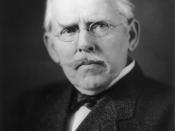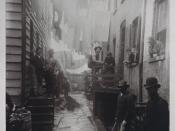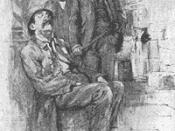How The Other Half Lives
As the nineteenth century came to a close and the industrial revolution continued gathering momentum, the Victorian ideal of social responsibility was also coming to an end. The strong moral values the Victorian held to such things as self-control, order, sobriety, and being respectful of property seemed to be dieing along with public conscientiousness. These strong ethical beliefs held by Victorian society were slowly being replaced by greed, envy, anger and complacency. In his book How The Other Half Lives, Jacob Riis examines how the lack of social responsibility by the elite of society, civil servants and even the common laborer which lived in the tenements, toward one another created the harsh environment in which the 'other half' lived. Through heart wrenching pictures, individual experience and personal belief, Riis depicts the social rot that was taking place because of a basic lack of human compassion.
Jacob Riis also brings to light the segregation that was perpetuated by the lack of social responsibility from manager to employee and from one group of individuals to another. By doing so Riis under takes the task of attempting to explain and justify the segregation that transpired in New York City, be it occurring naturally or by design on the powers that were.
Social responsibility was a significant factor in the life of the Victorian. Having Christian morals and values meant that you were to not only look upon your things but also upon the things of others, as the Bible teaches. In How The Other Half Lives Riis describes a society where the Victorian values of social responsibility have long since been forgotten and replaced by the attitude of 'every man for himself.' When Riis begins describing the living conditions of these tenements that the working class were...


